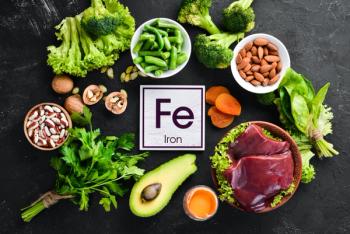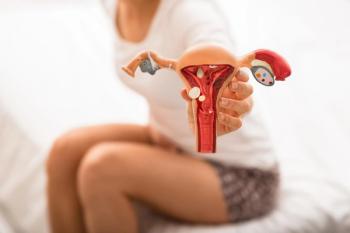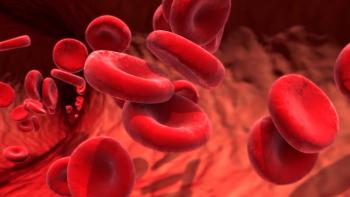A 1-mg/day dienogest (DNG) treatment is not inferior to a 2-mg/day dose for endometriosis-associated pain relief, according to a recent study published in Advances in Therapy.1
Data has indicated efficacy for DNG toward reducing pain in endometriosis patients, making it a common treatment method among this population. It has also been indicated as safe for use in women aged at least 40 years with increased thromboembolism risk, with 1-mg doses linked to milder estrogen reduction vs a greater dose.
Key takeaways:
- A 1-mg/day dose of dienogest (DNG) was not inferior to a 2-mg/day dose for reducing endometriosis-related pain over 48 weeks.
- The lower dose was associated with fewer discontinuations and milder estrogen suppression effects.
- Both groups reported substantial decreases in visual analogue scale and dysmenorrhea scores.
- Changes in bone mineral density and estrogen levels were small and clinically insignificant.
- A low FODMAP diet may help alleviate gut symptoms linked to endometriosis, supporting a holistic treatment approach.
“However, no prior trials have directly compared the efficacy and safety of 1-mg/day versus 2-mg/day DNG for endometriosis-associated dysmenorrhea over an extended treatment period,” wrote investigators.
Comparing DNG regimens
The randomized, multicenter trial was conducted to compare the safety and efficacy of 1-mg/day vs 2-mg/day DNG toward reducing endometriosis-associated pain across 48 weeks of treatment. At least 1 ovarian endometriotic cyst identified using imaging was required for study participation.
Patient questionnaires, laboratory tests, bone density measurements, and imaging studies were used to obtain relevant study data. Research Electronic Data Capture tools were used to measure this data.
Randomization was performed to place participants in a 0.5-mg DNG twice per day or 1-mg DNG twice per day group, referred to as the 1-mg group and 2-mg group, respectively. Patients began treatment on the second to fifth day of the first menstrual cycle after enrolment, attending a follow-up visit after 4 weeks then for every 12 weeks after.
Assessing endometriosis pain
Measurements were performed at each follow-up visit to assess relevant characteristics, including questionnaires, vital sign measurements, blood tests, and ultrasound evaluations. Baseline imaging data was obtained from a magnetic resonance imaging scan prior to study enrollment.
The visual analogue scale (VAS) was used to assess pain related to endometriosis. The change in VAS between baseline and week 48 was reported as the primary outcome. Changes in the VAS score, dysmenorrhea score, and cyst size at weeks 12, 24, and 36 were also reported.
Safety outcomes included fatigue, headache, palpitations, depressed mood, hot flashes, dizziness, musculoskeletal stiffness, insomnia, and anxiety. Investigators also recorded changes in serum estradiol (E2), bone mineral density (BMD), and the Kupperman menopausal index.
Comparable efficacy between 1-mg and 2-mg doses
There were 88 participants included in the final analysis, 42 of whom received 1-mg/day DNG and 46 received 2-mg/day DNG. A mean change in VAS score from baseline to week 48 of 44.63 mm was reported in the former group vs 54.19 mm in the latter group, indicating significant improvements in both groups and a between-group difference of -9.57 mm.
The 1-mg group also reported a mean change in dysmenorrhea score of -2.09 from baseline, vs -2.44 in the 2-mg group. A non-significant between-group difference of 0.36 was reported.
For ovarian endometrioma volume, mean reductions in the 1-mg and 2-mg groups were −0.37 cm3 and -0.5cm3, respectively, also highlighting no significant between-group differences. Additionally, both groups experienced significant reductions in serum E2 levels of −0.45 pg/m and −104.73 pg/mL, respectively.
Safety and discontinuation rates
Mean lumbar spine changes in BMD of −0.005 g/cm2 and −0.024 g/cm2, respectively, were reported, vs mean Kupperman menopausal index changes of –4.95 and -4.93, respectively. No significant estrogen deficiency-related adverse events were observed. Study discontinuation rates included:
- 4.8% in the 1-mg group overall linked to voluntary withdrawal
- 15.2% in the 2-mg group overall
- 4.3% in the 2-mg group linked to voluntary withdrawal
- 2.2% in the 2-mg group linked to ineligibility
- 4.3% in the 2-mg group linked to adverse events
- 2.2% in the 2-mg group linked to nonattendance
Overall, the results highlighted significant efficacy of 1-mg/day DNG toward reducing endometriosis-related pain, alongside improved safety vs 2-mg/day. Investigators concluded 1-mg/day DNG may be viable long-term treatment in patients with safety concerns.
“However, to further support clinical decision making, larger studies with increased statistical power may help clarify whether 1-mg/day DNG is truly non-inferior to 2-mg/day DNG or whether 2-mg/day DNG offers significantly superior pain relief,” wrote investigators.
Complementary strategies
Other methods are also available to manage endometriosis symptoms, including the use of a 28-day low FODMAP diet to improve gut symptoms, as discussed by Jane Varney, MD, senior research dietitian at Monash University in an interview with Contemporary OB/GYN.2
According to Varney, women undergoing a low FODMAP diet experienced significant reductions in gastrointestinal symptoms in just 2 weeks. Additionally, 60% of patients on the low FODMAP diet reported a positive response within 4 weeks.
“So, working with a dietician is really important if women are to follow this diet,” said Varney.











